Climate change impacts and vulnerability of western Mediterranean Basin populations of Pinus nigra
Climate change impacts and vulnerability of western Mediterranean Basin populations of Pinus nigra.
The understanding of regional vulnerability to climate change in Mediterranean mountain forests is not well developed. Climate change impacts on tree growth should be strongly related to the steep environmental gradients of mountainous areas, where a temperature-induced upward shift of the lower-elevation limit is expected, particularly amongst drought-sensitive species.
Trees will adapt not only to changes in mean climate variables but also to increased extreme events such as prolonged drought. In this research program, we investigate the sub-regional temperature and precipitation trends and measure the basal area increment in Pinus nigra subsp. salzmannii .
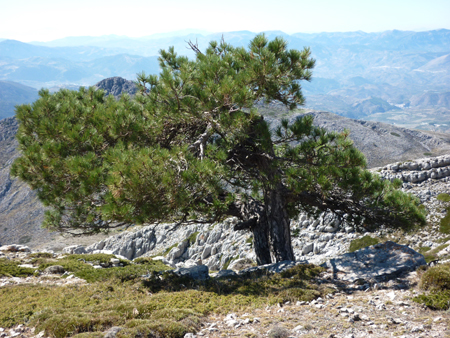
Colleagues
Pedro Antonio Tíscar.
Centro de Capacitación y Experimentación Forestal. 23470 Cazorla, Spain.
Benjamín Viñegla, Victor Lechuga.
Departamento de Biología Animal, Vegetal y Ecología, Universidad de Jaén. Campus Las Lagunillas, 23071. Jaén, Spain.
Manuel Esteban Lucas-Borja, David Candel-Pérez.
Castilla La Mancha University. School of Advanced Agricultural Engineering. Department of Agroforestry Technology and Science and Genetics. Campus Universitario s/n, C.P. 02071, Albacete (Spain).
Jordi Martínez-Vilalta, Bernat Claramunt. CREAF/Unitat d'Ecologia, Universitat Autònoma de Barcelona (Spain).
Juan Carlos Linares.
Departamento de Sistemas Físicos, Químicos y Naturales, Universidad Pablo de Olavide. Ctra. Utrera km. 1, 41002. Sevilla, Spain.
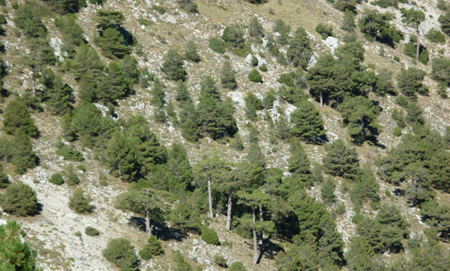
We are analysing growth patterns and climate responses on P. nigra along their distribution range, from northern Morocco (Talassemtane National Park), Mágina Mountain (south Spain), Cazorla Mountain Range (south Spain), Cuenca Mountain Range (Central-east Spain), Southern Catalonia and Catalan Pre-Pyrenees (north-east Spain).
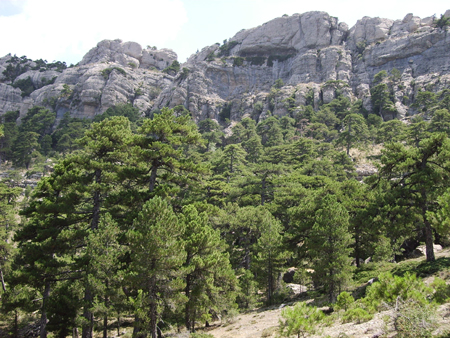
The latest climate change scenario projections for Europe predict that by 2100, the annual mean temperatures will increase by 3-4 °C (4-5 °C in summer and 2-3 °C in winter) in parts of the Mediterranean region. Yearly rainfall is expected to drop by up to 20% of current annual precipitation (up to 50% less in summer), whereas winter precipitation is expected to increase. Our results support a 20th century warming trend in the Pinus nigra distribution range, mainly between the months of February and June.
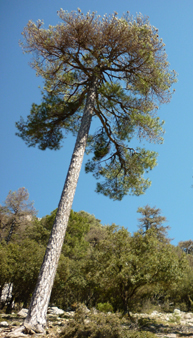
Sites currently limited by temperature (i.e., forests at higher elevations) could generally expect growth increases as a result of warming. However, the productivity of Mediterranean-mountains tree species might be limited by both short growing periods and summer droughts. Increasing temperature could extend the available growing period, however simultaneous increase in drought events may reduce the amount of time the trees are able to keep their stomata open, therefore reducing carbon uptake and shortening the time span for tree growth.
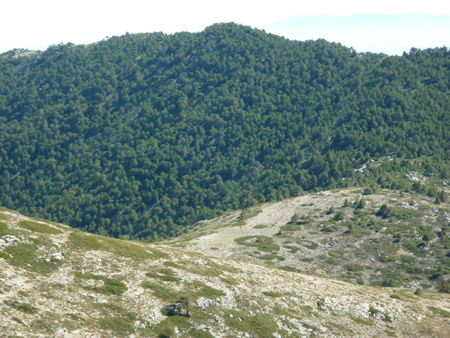
Our results support a positive effect of winter temperature on some high-elevation stands, which yielded steady growth rates over the XX century.
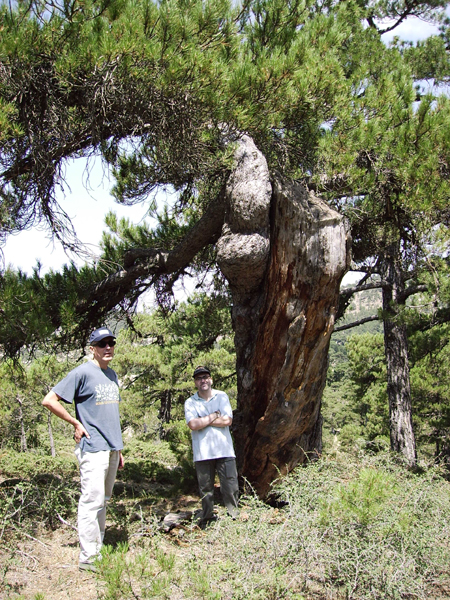
Stand management might also interact with climate-growth responses, as high-elevation stands showing growth declines also showed a common pattern of sudden growth releases and suppressions, which could be related to past logging and pruning.















